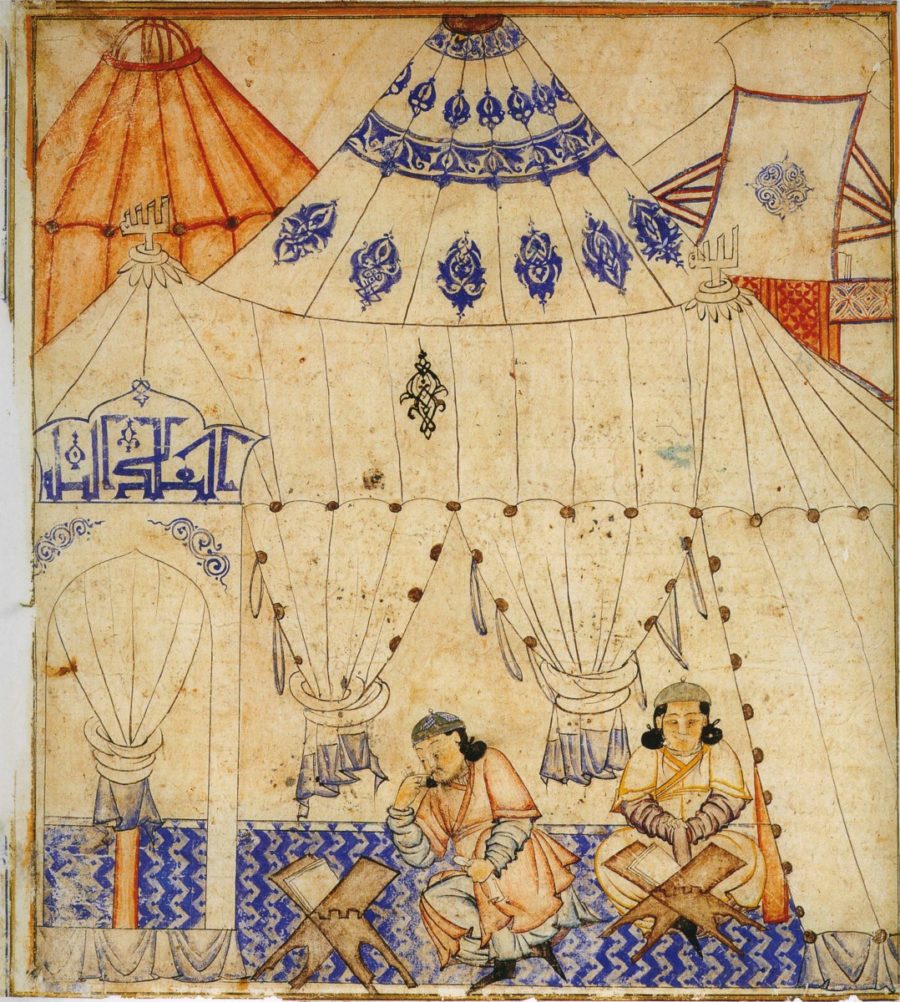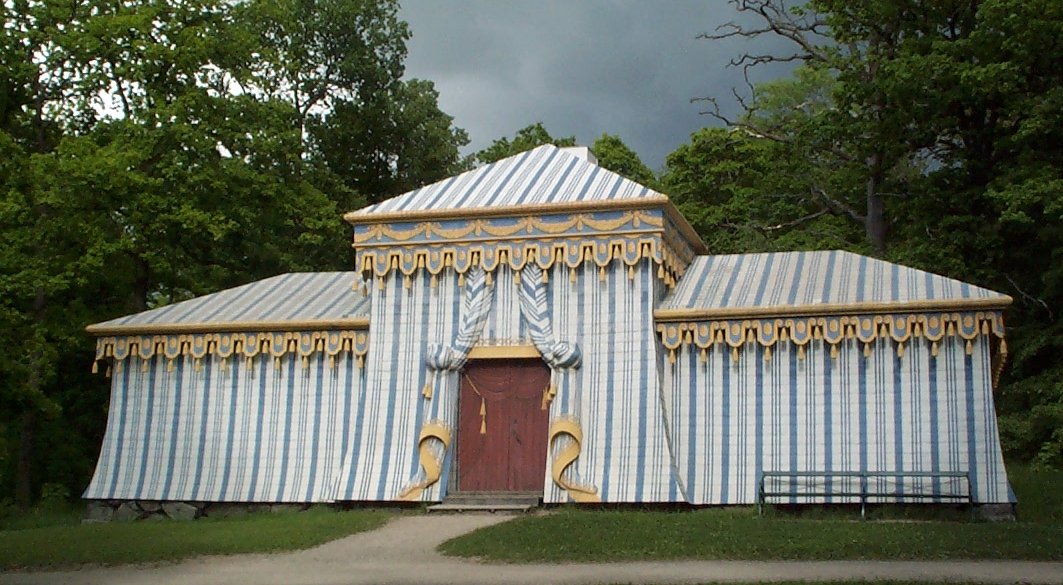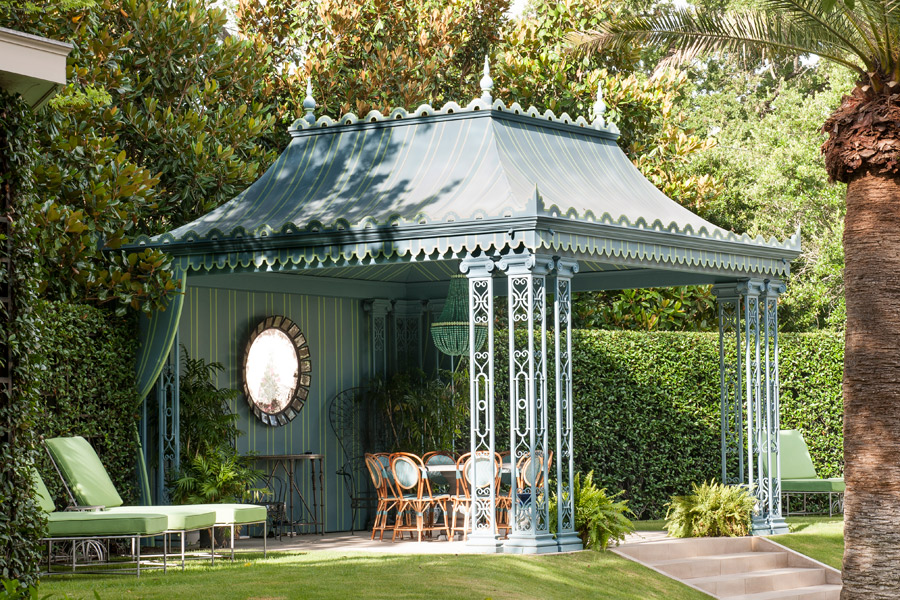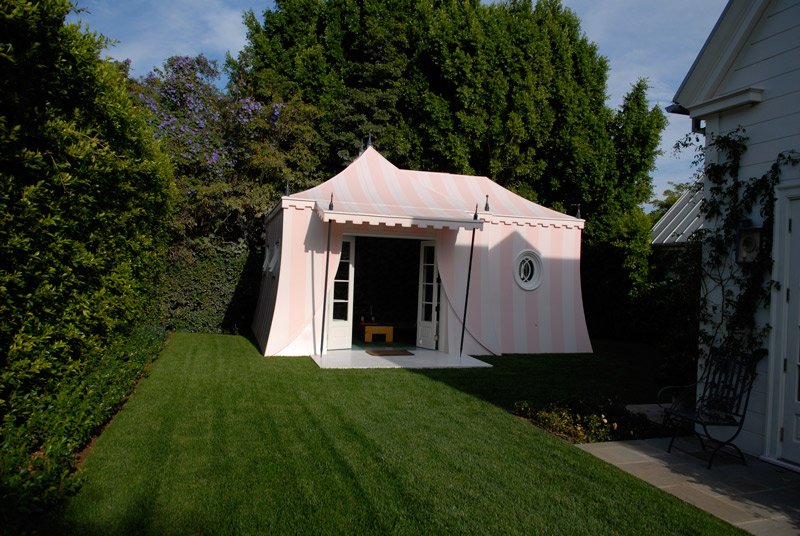Tent Pavilions: A Brief Account of a Long History
August 01, 2016
The tradition of garden tent pavilions traces back to the mobile palaces of 12th century Iran. The semi-nomadic patterns of the sultan and his royal entourage necessitated the creation of luxurious structures that could travel well. Many of these were incredibly ornate tents with up to hundreds of golden struts; some were made of silk, colored appliqué work, and sable lining.[1] These tents were used for everything, from housing banquets to sheltering the sultan while he slept. Their immense value can be assessed by their inclusion in treasury documents and royal dowries.
Such lavish tents remained a fixture in royal Persian, and by way of the Ottomans, Turkish life through the 19th century. It was in the 18th century, however, that tent pavilions caught on with the French and Northern European elite. As the country of Sweden advanced in status, they looked to emulate the French, who were known for their exquisite taste in art and architecture. In France, chinoiserie, “a mixture of Chinese, Japanese, Indian, or Persian styles…[with] rococo, baroque, gothick or any other style,” European architects thought to be appropriate, was the guiding style of the time.[2] In fact, standing at Versailles’ entrances were Turkish style guard pavilions. Therefore, in looking west, Swedish elites were also looking east. Constructed in the late 18th century under the reign of Gustav III, the Turkish inspired copper tent at Drottningholm Palace, like at Versailles, was originally designed for the palace guard. Lushly painted in blue and white, this structure came to represent the crown jewel of the royal grounds.
Borrowing from this long history of outdoor entertaining, Curtis & Windham has constructed several tent pavilions, updated for permanence. Metal-skinned, yet elegant, the Bel Air tent pavilion and the tent pavilions at the Del Monte Residence and the Inverness Residence fulfill modern needs while drawing from an age-old, illustrious tradition.
[1] O’Kane, “From Tents to Pavilions.”
[2] Impey, Chinoiserie.



